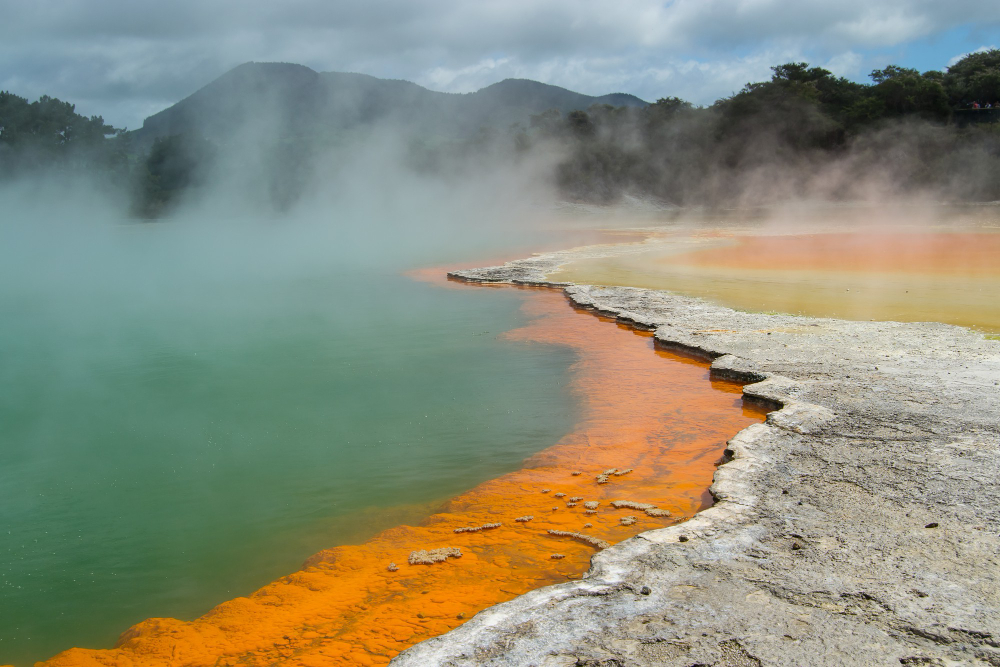4.5.2 Lecture Notes Thermal Energy Storage
Course subject(s)
4. Intelligent Control and Integration of Heating in the Energy Systems

This image is from freepik
This lecture will provide a basic understanding of the working principle of different heat storage technologies and what their application is in the energy transition.
The following topics will be discussed:
- The need for thermal energy storage
- The different technologies for heat storage and recovery
- An example of a multi energy system
The need for thermal energy storage
In many parts of the world, air conditioning is used during the warm months and heating is done during the colder months. Since cooling is the same as removing heat or dispersing heat into the atmosphere, it would be more efficient to store this available heat in the summer and use it in the winter.
For many buildings in moderate climates, the electricity demand for heating and the electricity demand for cooling has a similar size. This means that seasonal storage can be used to sustainably provide both heating and cooling to the building.
At large-scale systems, for example district heating networks, there exist similar challenges. Those networks often use continuous sources of heat, such as geothermal or power plants. Storage can help to optimally use the available heat and power. Additionally, the demand of heat and availability of heat become even more disconnected, as energy systems become more sustainable. This leads to an even greater need for storage.
The different technologies for heat storage and recovery
There exist different types of thermal energy storage systems. These are the three main types of storage:
- Sensible heat storage is the most widely used. Water is often used as a carrier, since it has one of the highest volumetric heat capacities of natural existing materials.
- Phase change material (PCM) storage stores the heat by changing the phase of the materials. Examples of these materials are paraffin, nitrates, and salt hydrates. The heat of fusion is generally much larger than the heat capacity of the material itself.
- Thermochemical material (TCM) storage stores the heat in a reversible endothermal or exothermal chemical reaction. This has a high volumetric energy density.
The last two types of storage do not only have a larger volumetric storage capacity than sensible heat storage, the efficiency of them is also higher. However, both are relatively expensive and only operate at a specific temperature, which makes them less flexible. Due to these characteristics, PCM and TCM are mostly used for small-scale, whereas sensible heat storage is used on large scale.
For sensible heat storage, there are different types of locations where the heat carrier can be stored. The first type is mines and caverns. A disadvantage of this type is that this is only available for cities where mines or caverns are present. The second type of location is tanks and pits. They can be used everywhere and can be made well insulated. However, tanks are expensive and have a limited capacity.
The last type of sensible heat storage is underground storage, which has many unknown advantages and opportunities. 2 main types of underground storage can be distinguished, which are shown below:
- Borehole heat exchanger system: This system uses a fluid, which circulates from and to buildings. Because all subsurface materials are good thermal conductors, the geology of the location is not important.
- Aquifer thermal storage system: This system uses groundwater as a carrier. There are layers where water of a different temperature can be stored. These layers are called “aquifers”. Water can be extracted from an aquifer and pumped through the building for cooling or heating. After the cooling of heating, the water is fed back into an aquifer with a different temperature.
In both types of underground storage, a heat pump is connected, which operates based on the heat demand of the building. However, in future energy systems the heat pump should operate based on the availability of electricity and store the heat until it is needed.
An example of a multi energy system
There is a project in the Netherlands, called the “smart multi energy system”, which uses solar panels and wind turbines to produce power. This power is used to generate hydrogen for mobility and heat for nearby houses.
In summer the heat pump extracts heat from a nearby river, and the produced heat is stored at a temperature of 60°C in an aquifer. Also, the waste heat from the electrolyser is stored.
In winter, the heat pump is not used much, but only for some peaks. The flow direction of the wells in de aquifer is reversed and stored heat is delivered to the houses.
Conclusion
In this lecture different types of thermal energy storage were discussed. First, the need for thermal storage was explained, which was followed by discussing the three main types of thermal storage. For sensible heat storage, a closer look was taken at the different options. Finally, an example of multi energy system was described, which is located in the Netherlands.

Technology of Intelligent and Integrated Energy Systems by TU Delft OpenCourseWare is licensed under a Creative Commons Attribution-NonCommercial-ShareAlike 4.0 International License.
Based on a work at https://online-learning.tudelft.nl/courses/technology-of-intelligent-and-integrated-energy-systems/



